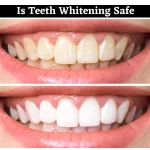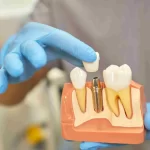Have you chipped your tooth? Do you have difficulty chewing or may be not like the way your smile looks anymore? It is time to get a crown. Crowns are dental restoration devices that act as a “cap” to cover a broken or damaged tooth. They are a permanent solution that improves the appearance and function of a damaged tooth.
They add strength to fragile teeth, help you chew better and are aesthetically pleasing. Based on the type of construction, there are three basic types of crowns. You can choose one that suits you the most, depending on your taste and restoration needs. Let’s look at the benefits and uses of different types of crowns.
Ceramic or Porcelain Crowns
They are made from high quality dental ceramic or porcelain. They are handcrafted by dental technicians to give them a “life-like” appearance. If the appearance of your teeth is a major concern, a ceramic crown is right for you.
- Ceramic crowns are the least durable of all crowns. Modern materials and advances are likely to change that.
- Due to their pleasant appearance, they are mostly placed on incisors or canines.
- If you have high lip or smile lines and all your front teeth are on display, get a ceramic crown.
- A ceramic crown is a good choice if you have broken one of your premolars.
All-Metal Crowns
As the name suggests, these crowns are made entirely out of metal. Whether they are made of premium metals, like gold and silver or base metals, they provide great strength and durability.
- Metal crowns do not fracture and are resistant to wear and tear.
- They have smooth surfaces that ensure the safety of the surrounding teeth.
- Metal crowns require the least amount of a healthy tooth to be removed.
- Molars do most of the chewing, so they need the strongest crowns. Gold crowns are the best choice for capping a broken molar.
Porcelain-Fused-To-Metal Crowns
These crowns promise to combine the best of both worlds. They are made by covering a strong metal shell with porcelain. These are durable crowns that look pleasant as well.
- These crowns are stronger than ceramic crowns but not as durable as metal ones.
- These crowns can be used on damaged front teeth if the patient has low lip or smile lines.
- Premolars are also a good candidate for PFM crowns.
- If the appearance of a molar is a factor, a PFM crown is a good choice.
This information is sure to help you understand the different types of crowns, and better equip you to make the right decision along with your dentist.

















